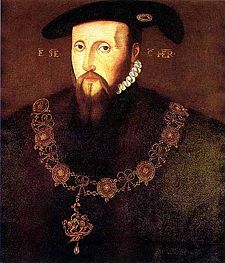 On this day in history, 11th October 1549, Edward Seymour, the Duke of Somerset, Lord Protector of the Realm and Governor of the King’s Person, was arrested and brought in front of Edward VI who summarised his charges as "ambition, vainglory, entering into rash wars in mine youth, negligent looking on Newhaven, enriching himself of my treasure, following his own opinion, and doing all by his own authority, etc."
On this day in history, 11th October 1549, Edward Seymour, the Duke of Somerset, Lord Protector of the Realm and Governor of the King’s Person, was arrested and brought in front of Edward VI who summarised his charges as "ambition, vainglory, entering into rash wars in mine youth, negligent looking on Newhaven, enriching himself of my treasure, following his own opinion, and doing all by his own authority, etc."
Somerset had become Lord Protector of England in February 1547, shortly after Henry VIII's death. Henry VIII's will had named sixteen executors who were to form a regency council, along with twelve other advisers, until Edward VI came of age, so Edward Seymour (then Earl of Hertford) had not been appointed Lord Protector by Henry VIII. The plan was that the council would rule collectively with every member having equal power and rights. However, the will also allowed the executors to grant themselves lands and honours, so Somerset took advantage of this and made himself Duke of Somerset and Lord Protector of his nephew's council, with the agreement of 13 out of the 16 executors. Somerset then went on to rule by proclamation, making all of the decisions himself.
Somerset's downfall was the result of widespread social unrest in England, such as the Prayer Book Rebellion in the South West in 1549, something which the rest of the council blamed him for. After his arrest, Somerset was succeeded as the leader of Edward VI's council by John Dudley, the Earl of Warwick, and although he was later released and restored to a place on the council, he was eventually executed on the 22nd January 1552 after plotting to overthrow Dudley. He was buried at the Chapel of St Peter ad Vincula at the Tower of London.



Leave a Reply